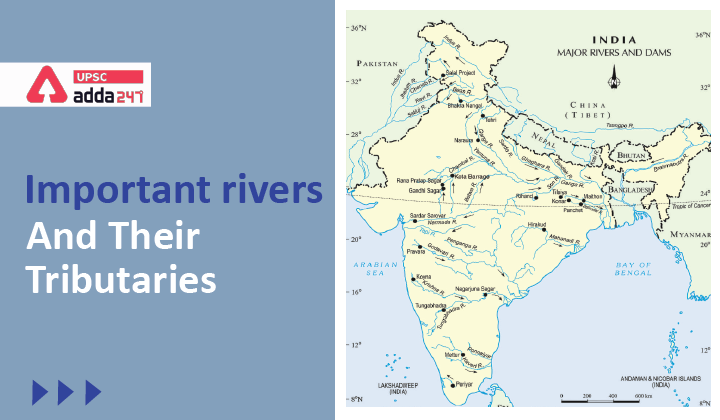Table of Contents
The Indian drainage system consists of numerous small and large rivers, shaped by the evolution of three major physiographic units and the nature of precipitation. India is home to many rivers, both major and minor. This article focuses on the major rivers and their tributaries. The Indian river system is a crucial topic for the UPSC CSE exam. In this article, we will explore the major rivers and their tributaries and compare the characteristics of Himalayan and Peninsular rivers.
Rivers and their Tributaries
India’s rivers, both major and minor, form an extensive drainage system that includes numerous tributaries. Below we have provided the the table for Rivers and their Tributaies.
| Rivers | Tributaries |
| Indus | Jhelum, Chenab, Ravi, Beas, and Sutlej |
| Ganga | Yamuna, Chambal, Son, Damodar, Mahakali, Ghagra, Ramganga, Kosi, Gandak. |
| Yamuna | Tons, Hindon, Chambal, Sindh, Betwa, Ken. |
| Chambal | Banas, Sind, Betwa, Ken. |
| Son | Johilla, Gopad, Rihand, Kanhar, North Koel. |
| Narmada | Amaravati, Bhukhi, Tawa, Banger |
| Brahmaputra | Subansiri, Kameng, Belsire, Dhansiri, Manas, Sankosh, Tista, Dibru, Dihing, Kalang, Burhi, Dikhu. |
| Mahanadi | Ib, Hasdo, Sheonath, Sondur, Pairi, Ong, Tel. |
| Godavari | Penganga, Wardha, Weinganga, Indravati, Sabari, Manjira. |
| Krishna | Koyna, Tungabhadra, Ghatprabha, Malprabha, Bhima, Musi, Munneru. |
| Kaveri | Harangi, Hemavati, Kabini, Bhavani, Arkavathy, Lakshmana Tirtha, Noyyal, and Arkavati. |
Comparison between the Himalayan and the Peninsular River
| Sl. No. | Aspects | Himalayan River | Peninsular River |
| 1. | Place of origin | Himalayan mountains covered with
Glaciers |
Peninsular plateau and central highland |
| 2. | Nature of flow | Perennial; receive water from the glacier
and rainfall |
Seasonal; dependent on monsoon
Rainfall |
| 3. | Type of drainage | Antecedent and consequent leading to
the dendritic pattern in plains |
Superimposed, rejuvenated resulting
in trellis, radial and rectangular patterns |
| 4. | Nature of river | Long course, flowing through the
rugged mountains experiencing headward erosion and river capturing; In plains meandering and shifting of Course |
Smaller, fixed course with well-adjusted
valleys |
| 5. | Catchment area | Very large basins | Relatively smaller basin |
| 6. | Age of the river | Young and youthful, active and
deepening in the valleys |
Old rivers with graded profiles, and have
almost reached their base levels |



 TSPSC Group 1 Question Paper 2024, Downl...
TSPSC Group 1 Question Paper 2024, Downl...
 TSPSC Group 1 Answer key 2024 Out, Downl...
TSPSC Group 1 Answer key 2024 Out, Downl...
 UPSC Prelims 2024 Question Paper, Downlo...
UPSC Prelims 2024 Question Paper, Downlo...





